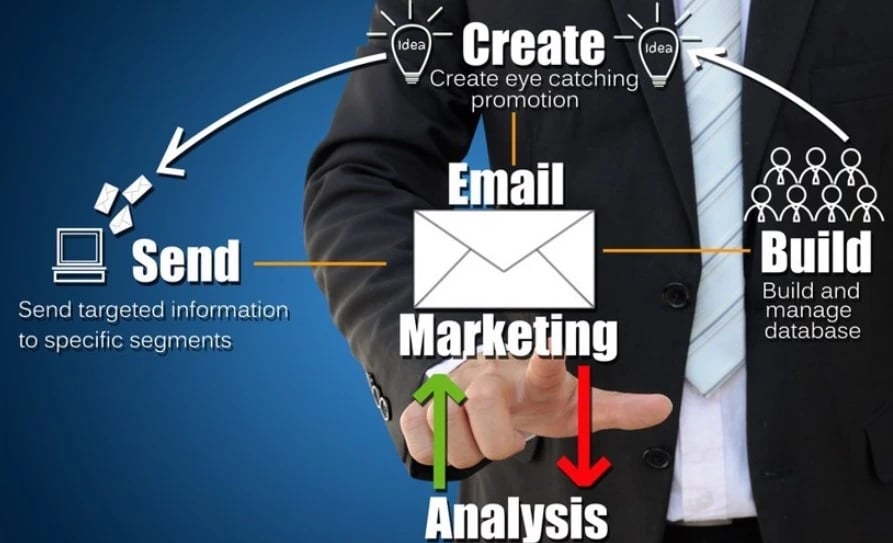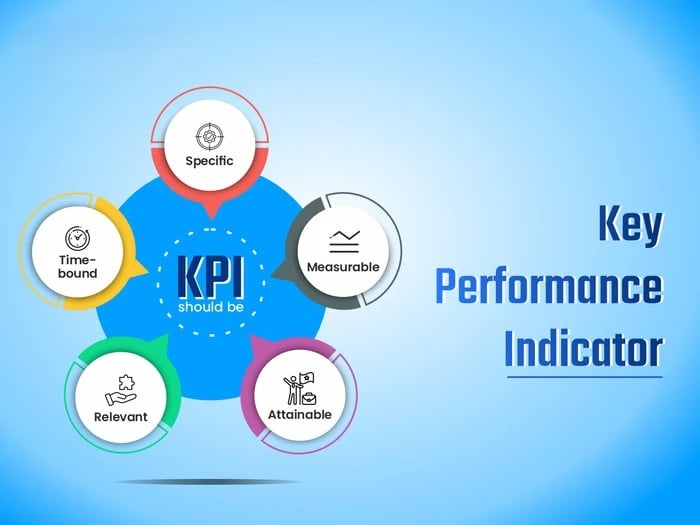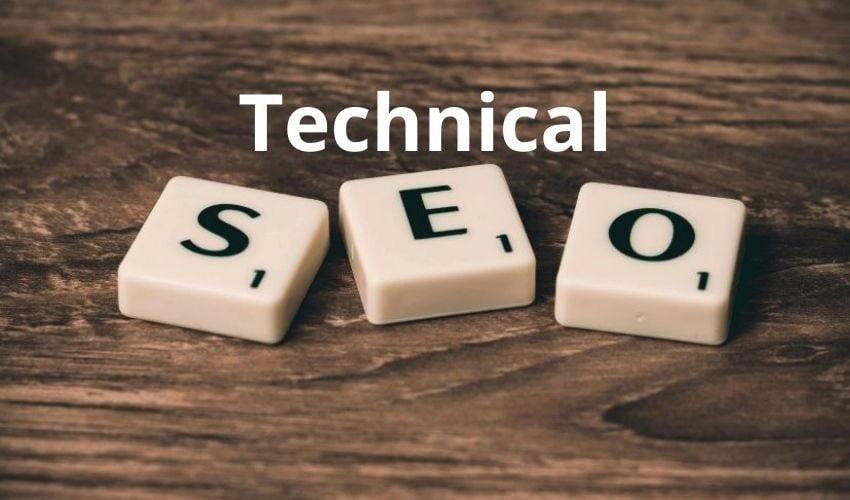
It’s necessary for you to implement a successful email marketing strategy to effectively engage your customers and nurture your leads. By leveraging the power of email, you can directly connect with your audience and drive traffic to your website while strengthening your brand’s presence alongside social media. At Mister Nguyen Agency, we understand that a tailored email marketing approach can elevate your business and create lasting relationships with your customers. Follow these key steps to optimize your email campaigns and achieve measurable results for your brand.
Key Steps to Creating a Successful Email Marketing Strategy
1. Set specific goals to measure success.
Define your business objectives clearly.
2. Research your target audience thoroughly.
Understand customers’ needs and preferences for better engagement.
3. Analyze previous marketing results for insights.
Learn from past campaigns to improve future strategies.
4. Segment your email lists effectively.
Tailor messages for different leads and customer groups.
5. Plan campaigns around key dates and holidays.
Utilize important business moments to connect with customers.
6. Allocate time for crafting quality emails.
Consistent design and content enhance your brand’s influence.
Understanding the Importance of Email Marketing
The effectiveness of email marketing is unmatched in the digital marketing landscape. This powerful tool allows you to engage with your customers directly in their inboxes, ensuring that your message reaches a highly receptive audience. By implementing a well-structured email marketing strategy, you can build credible relationships with your audience, leading to increased sales and brand loyalty. The tailored messages you send can nurture leads at various stages of the buying cycle, making your email communications a vital part of your overall marketing strategy.
Overview of Email Marketing Benefits

Marketing through email enables you to cultivate and maintain strong relationships with your leads and customers. One key benefit is the ability to deliver personalized content that resonates with your audience’s preferences and behaviors. This personalized touch can significantly improve customer engagement, leading to higher conversion rates. Additionally, email marketing allows you to measure your campaigns’ effectiveness using key performance indicators (KPIs), helping you refine your strategy over time for maximum impact.
The Growth and Value of Email Marketing

With more than four billion people using email regularly, it’s clear that email marketing is a robust and growing channel for businesses across the globe. As of 2020, the email marketing revenue was valued at $7.5 billion and is projected to reach $17.9 billion by 2027. This growth highlights the increasing importance and effectiveness of email in reaching potential customers. As you consider your business strategy, leveraging the expanding value of email marketing can elevate your brand’s presence and conversion potential.
Understanding the significant return on investment (ROI) that email marketing can bring is crucial for any business looking to maximize its marketing efforts. Businesses can expect an average ROI of $42 for every dollar spent on email marketing, making it one of the most cost-effective methods available. This impressive statistic underscores the critical role that email marketing plays in establishing a successful online presence.
The Role of Email in Lead Nurturing

Overview of email’s role in lead nurturing reveals its capacity to guide potential customers through the buying process. By sending targeted and relevant emails based on user behavior and preferences, you can build trust and keep your audience engaged long enough to lead them towards a purchase. This nurturing process not only fosters relationships but also enhances the likelihood of converting leads into loyal customers.
Email communication allows you to share valuable content, promotions, and updates tailored to your audience’s interests, positioning your business as a helpful resource. As you implement your email marketing strategy, remember that the goal is to develop a consistent line of communication with your leads, gradually moving them through your sales funnel and increasing conversion rates.
Email marketing is a critical component of your overall strategy, especially as it pertains to nurturing leads. By applying targeted messaging based on segmenting your audience, your emails can resonate more profoundly with your customers, encouraging them to engage with your website more often.
This format and content provide a thorough overview of the importance of email marketing, ensuring that readers are well-informed and can appreciate the need for a strategic approach. The writing leverages SEO best practices while addressing readers directly, fostering a connection that encourages them to take action with Mister Nguyen Agency.
Goal Setting for Email Marketing

Little do many business owners know, setting clear and achievable goals is the cornerstone of a successful email marketing strategy. Without concrete goals, it’s easy to wander aimlessly, missing out on valuable opportunities to connect with customers and boost your website’s performance. By establishing a well-defined framework for your goals, you can not only enhance your email marketing efforts but also improve overall marketing efficiency, leading to increased leads and conversions for your business.
Defining SMART Goals
Goals should be grounded in the SMART criteria: Specific, Measurable, Attainable, Realistic, and Time-Sensitive. When you define your email marketing goals using this framework, you create a clear pathway for success. For instance, rather than stating a vague goal like “increase email engagement,” a SMART goal would be “increase the click-through rate of my emails to 5% by the end of the quarter.” This specificity provides you with a clear target to aim for, allowing you to evaluate your marketing efforts effectively.
Setting SMART goals empowers you to measure your progress objectively, making it easier to identify what is working and what isn’t in your email marketing strategy. By focusing your efforts on well-defined objectives, you can align your email campaigns with your broader business goals, ensuring that every email sent has a purpose that contributes to your ultimate vision.
Identifying Key Performance Indicators (KPIs)
To assess the effectiveness of your email marketing efforts, you must identify key performance indicators (KPIs) that align closely with your goals. KPIs serve as measurable values that can help you gauge performance and progress toward achieving your established objectives. For example, if your goal is to increase the click-through rate, your KPI would be the number of clicks your emails generate. Tracking these indicators consistently will provide you with valuable insights into how well your email campaigns resonate with your audience.
KPIs offer you a data-driven approach to evaluate the success of your email marketing efforts. Utilizing tools like Google Analytics or your email marketing platform’s built-in analytics, you can monitor imperative metrics such as open rates, click rates, and conversion rates. By doing so, you can adjust your campaign strategies based on historical performance, ensuring that your marketing decisions are informed by real data rather than assumptions.
Aligning Goals with Business Objectives
SMART goals are not just standalone targets; they should be harmoniously aligned with your overarching business objectives. This alignment ensures that your email marketing campaigns contribute meaningfully to your overall brand strategy. For instance, if your business goal is to increase total sales by 15% this quarter, your email marketing goal could focus on generating a specific amount of sales or leads through targeted campaigns and promotional offers designed to bring customers directly to your website.
Business objectives provide context for your email marketing goals, ensuring that every email you send is a stepping stone toward achieving broader aims. By keeping your emails relevant to your business strategy, you enhance their effectiveness, allowing your audience to see not just your products, but the value they bring to their lives.
Business alignment in your goals allows you to create cohesive messaging across various platforms, including social media and other marketing channels. When your email marketing efforts are synchronized with your business objectives, you can create a robust and effective strategy that boosts your brand visibility and drives customer engagement.
Researching Your Target Audience
Now that you’re ready to enhance your email marketing strategy, the next crucial step is researching your target audience. Understanding your audience is not just about basic demographics; it’s about diving deeper into their behaviors, preferences, and values. A well-defined understanding of your audience allows you to tailor your email content in a way that resonates with them. By accurately identifying your customers, you empower your business to create compelling content that drives engagement, leverages trends, and ultimately leads to sales.
Creating Customer Avatars
Target audience research begins by creating customer avatars or personas, which serve as representations of your ideal customers. This involves gathering detailed information about your leads, including their age, location, interests, buying behaviors, and even their challenges. By painting a vivid picture of your customer avatars, you can tailor your messages to meet their specific needs. For instance, if your business, like Mister Nguyen Agency, focuses on helping customers build their online presence, understanding that your target audience is likely concerned about their brand visibility can guide your email content and design.
Understanding Audience Preferences and Values
With the information amassed from your customer avatars, you’ll be better equipped to understand your audience’s preferences and values. This knowledge is pivotal, as 71% of customers prefer buying from brands that align with their personal values. By understanding what drives your audience, whether it’s sustainability, innovation, or community engagement, you can craft email messages that resonate on a personal level, fostering stronger connections between your business and its leads.
The values and preferences of your audience provide a rich tapestry that informs everything from your email subject lines to the types of content you create. If you identify that your audience places a high value on eco-friendliness, for example, your email campaigns might focus on highlighting sustainable practices within your business or showcasing products that support this value. This not only makes your content more appealing but encourages brand loyalty and trust.
Methods for Gathering Audience Insights
Understanding your audience isn’t a one-time task; it requires ongoing effort and the use of various methods to ensure you’re capturing the most accurate insights. Utilize tools like customer satisfaction surveys, social media analytics, and engagement metrics from your website. Each of these methods can provide valuable data on what resonates with your audience, allowing you to adjust your email marketing strategy accordingly. Additionally, interacting with your customers directly through interviews can uncover nuances that data alone might not reveal, enhancing your understanding of their needs.
Understanding your audience’s insights also means staying updated on trends and changes in expectations. Regularly reviewing your customer interactions and feedback will help you refine your customer avatars as they evolve and grow. Keeping a pulse on your audience through multiple channels, including website analytics and social media engagement, ensures that your email marketing remains relevant and effective for your business.
Analyzing Previous Campaign Results
Keep in mind that analyzing your previous email marketing campaigns is a crucial step in refining your strategy and achieving better results in the future. By reviewing how past campaigns performed, you gain valuable insights into what resonated with your audience and what did not, helping you make more informed decisions moving forward. This process can significantly enhance your ability to nurture leads effectively and build lasting relationships with your customers. Moreover, with over four billion people engaging with email regularly, leveraging a well-crafted email marketing strategy is more beneficial than ever.
Compiling End-of-Year Marketing Reports
The first step in analyzing your past campaigns is to compile a comprehensive end-of-year marketing report. This report should encapsulate the performance metrics from your various email campaigns throughout the year, including open rates, click-through rates, conversion rates, and revenue generated. It’s imperative to gather this information in a structured manner, as this will not only help you see the big picture but also identify specific trends and patterns in your marketing efforts that can guide you in shaping your future strategies.
As you compile this report, ensure that you not only document the successes but also highlight areas where your campaigns may have fallen short. This in-depth look provides a transparent view of your email marketing landscape, enabling you to adjust your tactics and better align your marketing channels—like social media and your website—with your business goals. By doing so, you set the stage for refined, targeted campaigns that are driven by data rather than guesswork.
Identifying Successful Strategies
To effectively move forward, you need to identify which strategies yielded positive results in your email marketing efforts. Focus on understanding which content themes, subject lines, and calls-to-action resonated with your customers the most. By segmenting your audience based on their responses, you can pinpoint the elements of your campaigns that drove engagement and conversions. This knowledge allows you to replicate success in your upcoming campaigns while also providing a foundation for testing new approaches.
Successful strategies often include tailored messaging that speaks to specific customer segments. For example, if your data shows that a particular demographic within your audience responds positively to environmentally-friendly initiatives, you can craft themed content around sustainability that aligns with their values. With this targeted approach, you can maximize engagement and foster deeper connections with your leads, ultimately driving more traffic to your website and boosting sales.
Learning from Mistakes and Challenges
Campaign performance analysis isn’t just about celebrating successes; it’s equally about learning from mistakes and challenges. By evaluating campaigns that underperformed, you can gather key insights that inform your future strategies. This evaluative process helps you adjust your messaging, timing, and overall approach to better meet your customers’ expectations and preferences. For instance, if a campaign experienced a low open rate, consider revisiting your subject lines or the time of day you’re sending those emails, identifying what might not have resonated with your audience.
Understanding that every setback holds potential learning opportunities is imperative for creating a resilient email marketing strategy. You may discover that people engaged more with specific content types or that certain segments of your audience preferred different communication styles. This continual feedback loop is vital for optimizing your email marketing efforts, allowing you to capitalize on new findings and further build your brand’s credibility with your customers.
Email List Segmentation
To effectively engage your audience and boost your email marketing success, it is crucial to implement robust email list segmentation. By dividing your email list into smaller groups based on shared characteristics, you can tailor your messaging to better resonate with each segment. This personalized approach not only enhances customer satisfaction but also drives conversion rates. According to data, businesses that prioritize segmentation in their email marketing strategies can see significantly higher open rates, often exceeding 14%. For more insights on optimizing your email marketing efforts, check out Email Marketing: 7 Unique Strategies (Backed by Research).
Importance of Segmentation
Importance of segmentation lies in its ability to allow you to send relevant content to each customer group. Not every recipient on your list will be interested in the same products or services, so it’s vital to understand their unique preferences and pain points. By sending targeted emails based on specific criteria, you foster meaningful connections with your audience, which ultimately increases customer loyalty and retention. In fact, studies suggest that professionals who segment their lists see a common improvement in engagement metrics across the board.
Moreover, adopting an effective segmentation strategy allows you to maximize your marketing ROI. When your emails align more closely with the interests of your audience, it reduces the likelihood of your messages being flagged as spam or ignored altogether. This not only helps maintain your sender reputation but also ensures your business remains top-of-mind for your customers. As you refine your email segmentation strategy, you will find that it is a powerful tool for nurturing leads and driving sales.
Different Segmentation Strategies
Any successful email marketing strategy incorporates various segmentation strategies to tailor messages effectively. Some common segmentation methods include demographic, geographic, behavioral, and psychographic segmentation. For example, you might categorize your email list based on customer age and location to send targeted promotions for products that resonate with those identities. Additionally, behavioral segmentation allows you to focus on past purchases or website engagement, providing insights into customer preferences that can inform your email content.
Plus, you can also segment your audience based on engagement levels to create re-engagement campaigns aimed at customers who haven’t interacted with your emails recently. This allows you to craft specific messaging that can resurrect interest and bring those leads back into the fold. By using a combination of these segmentation strategies, you can create a dynamic email marketing approach that captures the attention of your audience more effectively.
Tailoring Content for Each Segment
On the other hand, tailoring content for each segment is paramount to your email marketing strategy’s success. When you segment your audience, you can craft messages that speak directly to each group’s needs and interests. This personalization drives higher engagement rates, and ensures that your emails feel relevant rather than generic. For instance, if you find that your customers value sustainability, highlighting eco-friendly initiatives or products in your emails can align your business with their values and boost conversion rates.
Email newsletters that provide value, such as industry insights or tips related to your products, can also be designed according to each segment’s unique preferences. The more relevant the content, the more likely your customers are to engage with it. This tailored approach not only improves your email open rates but also positions your brand effectively, allowing you to build trust and authority with your audience, crucial for any successful business initiative.
Developing an Email Marketing Calendar
After setting the foundation for your email marketing strategy, the next crucial step is to develop an email marketing calendar. This calendar will keep your efforts organized, enable you to stay on track with your campaigns, and ensure you’re effectively reaching your customers at the right times throughout the year. With more than four billion people using email regularly, a well-planned calendar can help you maximize engagement and conversion rates, boosting your business’s growth.
Key Dates and Events to Include
For a practical email marketing calendar, begin by identifying key dates and events relevant to your business and your audience. These may include important holidays, product launches, special promotions, and industry-specific events. By marking these dates, you can ensure that your email campaigns are timely, capitalizing on periods when your customers are most receptive to your messaging.
In addition to seasonal holidays, consider incorporating events like anniversaries, local community happenings, or charity initiatives that resonate with your brand and audience values. Aligning your campaigns with these key dates not only helps maintain relevance but also builds goodwill and strengthens customer relationships, ultimately positioning your brand as a trusted authority in your niche.
Planning Your Email Frequency
Any successful email marketing strategy requires careful consideration of how often you will communicate with your leads and customers. It’s crucial to establish a consistent cadence that keeps your audience engaged without overwhelming them. A general rule of thumb is to aim for sending out one email newsletter per week; this ensures that your subscribers receive valuable content regularly while avoiding the fatigue that can come from excessive communication.
Include time for testing different frequencies to discover what works best for your audience. Monitor your key performance indicators (KPIs) such as open rates and click-through rates to assess the effectiveness of your email frequency choices. Adjust as necessary based on these metrics to maintain an optimal engagement level among your customers.
Balancing Promotional and Value-Based Content
Value-based content should form the cornerstone of your email marketing strategy. It’s vital to focus on delivering useful and informative content to your audience instead of constantly pushing promotional messages. By striking a balance between valuable content and promotional offers, you can foster a trusting relationship with your subscribers, ultimately increasing your conversion rates and customer loyalty. With an email marketing market projected to grow to $17.9 billion by 2027, it’s clear that businesses must master this balance to stay competitive.
It’s beneficial to determine how you define “value” for your specific audience. This might include educational articles, industry news, tips and tricks, or expert insights that align with your customers’ interests and needs. By thoughtfully integrating value-based content with your promotional messaging, you can enhance your brand reputation while effectively guiding your audience through the buyer’s journey.
Crafting Engaging Email Content
Unlike traditional marketing methods, email marketing allows you to engage directly with your customers in an intimate and personalized manner. To capitalize on this opportunity, you need to craft engaging content that speaks to your audience’s interests and encourages them to take action. Your email content should resonate with your leads, offering them valuable insights, useful information, or compelling reasons to visit your website or make a purchase.
Tips for Writing Compelling Subject Lines
Writing an attention-grabbing subject line is crucial, as it’s the first thing your customers will see in their inbox. A strong subject line can significantly increase your email open rates, setting the stage for the rest of your content. Consider these tips to create impactful subject lines that entice your recipients:
- Keep it short and sweet—aim for 6-10 words for maximum impact.
- Incorporate personalization, such as the recipient’s name or location.
- Create a sense of urgency by using time-limited offers.
- Use action-oriented language that compels your audience to act.
- Test various subject lines to see which resonates best with your audience.
This foundational work sets up a successful email marketing strategy for your business, enabling you to connect with your customers effectively.
Essential Elements of Quality Email Design
Elements of quality email design are vital for grabbing your audience’s attention and ensuring your message is conveyed effectively. You should prioritize creating visually appealing emails that are easy to read and navigate. Your design should include concise layouts, clear calls-to-action (CTAs), and mobile-friendly formatting to appeal to customers on all devices. According to statistics, approximately 50% of emails are opened on mobile devices, making it crucial that your emails look great and are functional on smartphones and tablets.
A well-designed email helps build your brand’s credibility and enhances the likelihood of customer engagement. Strong visual hierarchies, consistent branding elements, and strategic placement of CTAs can lead to improved click-through rates and conversions. Additionally, remember to include relevant images or graphics that complement your content without overwhelming the reader. This approach not only makes your emails more engaging but also reinforces your brand message.
Scheduling Time for Content Creation
Compelling email content doesn’t just happen; it requires time and careful thought. Establishing a routine for crafting your email campaigns can streamline your process, reduce procrastination, and enhance creativity. By dedicating specific blocks of time each week for content creation, you can ensure that your emails are not only well-written but also strategically aligned with your marketing goals, like boosting sales or driving traffic to your website.
Email marketing can feel overwhelming, especially when juggling multiple tasks within your business. This is why maintaining a consistent schedule is key in establishing a successful content strategy. Setting aside designated time allows you to fully focus on creating high-quality emails without distractions, ensuring you maintain consistency in your messaging and brand identity.
Email marketing isn’t just about sending messages; it’s about crafting meaningful communication that nurtures your leads and supports your business goals. By leveraging the elements discussed in this guide, you can enhance your email marketing strategy with the expertise of Mister Nguyen Agency, helping you connect with your customers and grow your brand effectively.
Conclusion
Drawing together the key steps to creating a successful email marketing strategy, you can significantly enhance your ability to connect with your customers and convert leads into loyal clients. By setting clear goals, understanding your audience, and segmenting your email lists, you ensure that your messages resonate with recipients and provide real value. Additionally, plotting important dates and planning campaigns on an email calendar streamlines your efforts, making it easier to engage your audience regularly. As you incorporate these strategies, you’re not just sending emails; you’re building a consistent brand narrative that aligns with your customers’ expectations and interests, ultimately driving traffic to your website.
At Mister Nguyen Agency, we understand the significance of a well-executed email marketing strategy in nurturing leads and establishing your business as a credible authority. By integrating these tactics with your overall marketing plan on social media and other channels, you foster a cohesive branding experience that captivates and retains customers. As you implement these best practices, remember that continuous learning and adapting your approach based on performance metrics will keep your strategies effective and relevant in an ever-evolving market.










